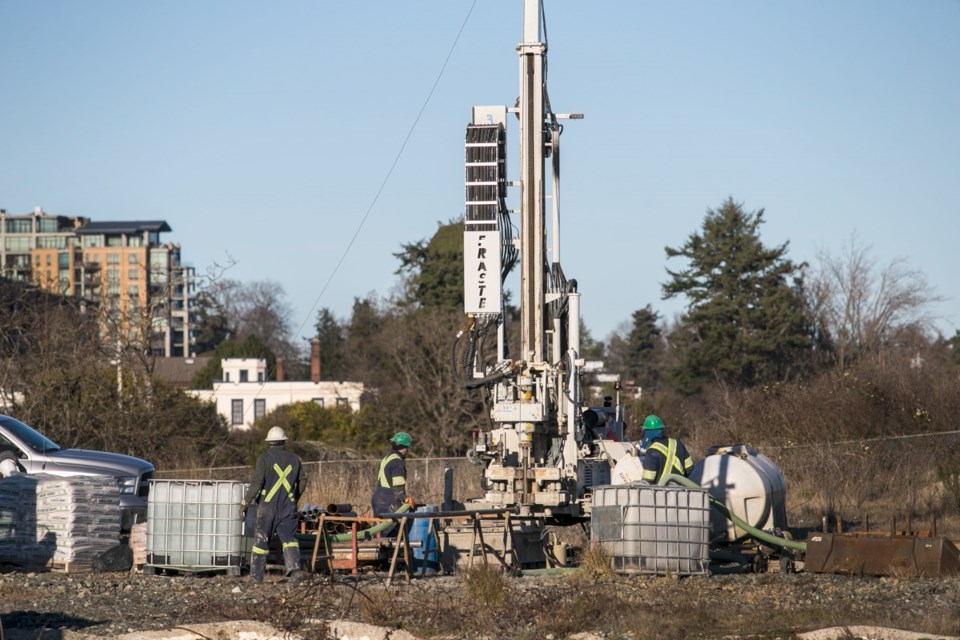Sewage treatment took a back seat to housing, parks and relations with First Nations in Barb Desjardins’ inaugural address Wednesday, marking the start of her second term chairing the Capital Regional District board.
The Esquimalt mayor explained before her speech that significant progress on sewage treatment has already been made.
“Really, that program is moving and it’s going forward, it’s going through all its processes,” she said. “So at this point what can you say about it? Not much.
“Victoria is going through their rezoning process, Esquimalt is doing their thing.”
The need for a rezoning involving Esquimalt, home of the proposed sewage-treatment plant site at McLoughlin Point, surprised many when it came up in mid-December. A previous effort to build a plant at McLoughlin Point was halted in 2014 when Esquimalt council rejected zoning variances.
In the meantime, geotechnical work is being conducted by the CRD at the site. The findings could be used in finalizing plant design.
Desjardins said efforts to increase affordable housing in the region will continue with a newly formed committee that combines housing and health-related concerns. “The committee will be able to make decisions around the full spectrum of housing needs for the region.”
She said in her speech that progress is expected with housing in 2017.
“This year, in an innovative partnership between the CRD, the province and Island Health, and working with the Coalition to End Homelessness, we expect to see the first projects take place from the Regional Housing First Program,” Desjardins said. “This program will deliver housing units to address the needs of people experiencing chronic homelessness while also helping to stimulate the development of housing for low- to moderate-income households.”
More will be done in working with First Nations this year, Desjardins said. “That’s a relationship process that we’re working hard at.”
The CRD should have involvement from throughout the region, including First Nations, Desjardins said. “Right now, we’re not the whole region.”
She said that while Songhees Chief Ron Sam and Esquimalt Chief Andy Thomas are on the CRD’s liquid waste management committee, more needs to be done. “That is not giving them representation at the board.”
Desjardins said that among the 2017 highlights in regional parks will be the expected July completion of the 13-kilometre Sooke Hills Wilderness Trail, which is set to be part of the both the Trans Canada Trail and the Vancouver Island Spine Trail. The Sooke trail will feature a suspension bridge over the Goldstream River.
She said more will be done on the E&N Rail Trail in 2017.
“The section that links the Songhees and Esquimalt Nation and my community of Esquimalt is currently on track for construction in 2017,” she said in her speech. “And an additional 2.3 km of trail will be complete by 2019, creating a continuous trail from Langford to Victoria.”
The region’s trails are widely used, Desjardins said. “These trails are an important part of the cycling and walking network, and provide transportation and recreation opportunities for visitors and residents alike.”
Desjardins said 2016 laid the ground work for a lot to happen this year.
“We set a lot in motion last year that is now going to be shovels in the ground and processes moving, as opposed to policy and decision-making. Now it’s action.”



